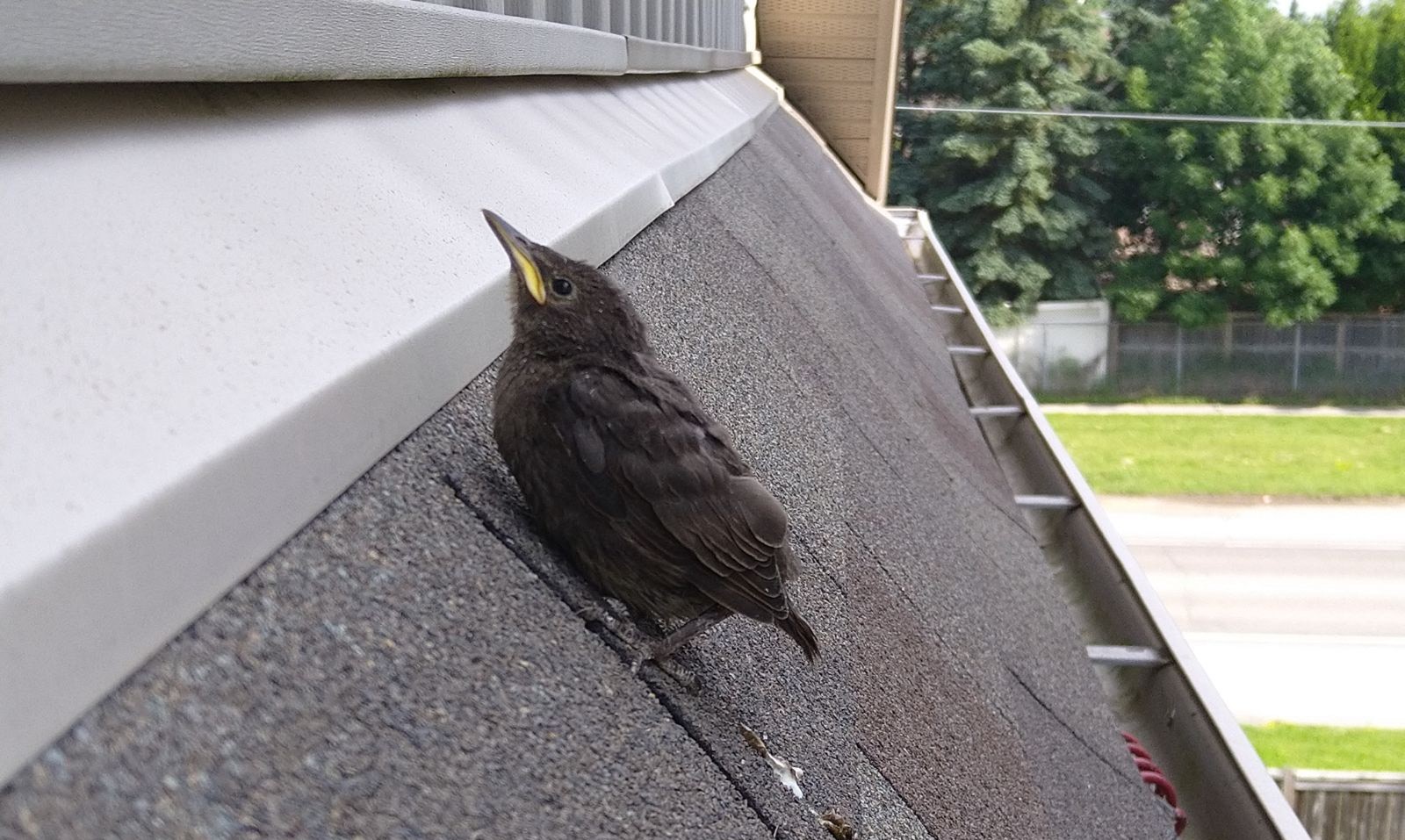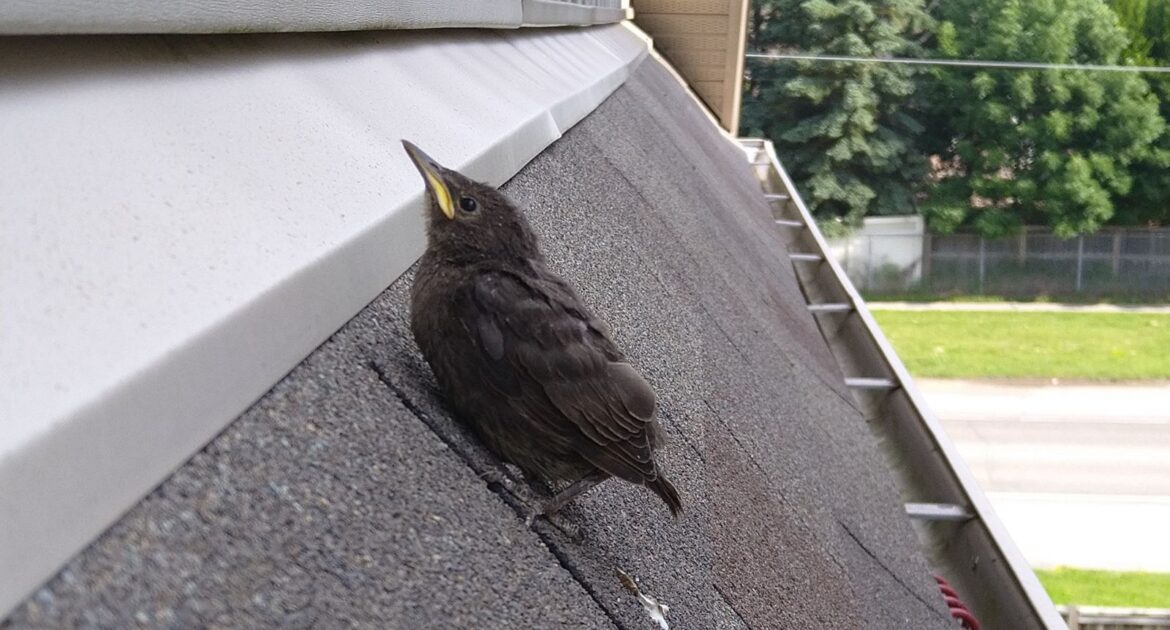Spring is here, and nature is buzzing with activity, especially for birds entering nesting season. While they’re busy building nests and raising their young, they often choose some unexpected spots, like storefront signs, rooftops, ventilation systems, or warehouse rafters. For businesses, this can quickly become a challenge.
So, how do you handle bird nests and baby birds on your property, especially with laws and safety to consider? Proper bird control and wildlife management are key to keeping your business safe and running smoothly.
If you’re dealing with nesting birds this spring, check out this guide! Learn how to safely manage active nests, protect everyone on your property, and prevent future issues. And if you need expert help, Skedaddle Humane Wildlife Control in Toronto is here for you.
How to Handle Active Bird Nests in Your Business
Handling active nests takes care and attention, especially during the busy spring season. It’s important to make sure everything is approached legally and safely. While nesting birds might seem harmless, improper handling can cause harm to them and inconvenience to you. Here’s how to manage nests responsibly.
Assess the Nest’s Status
The first step is figuring out whether the nest is active or abandoned. Check for movement or activity near the nest. Parent birds often come and go to bring food for their young. If no activity is going on, the nest might be empty. However, if you see eggs or babies, disturbing the nest may be illegal under wildlife laws. Proper assessment can help you move forward without causing issues.
Determine the Location and Risks
The next step is looking at where the nest is located and how it might impact your space. Nests in areas like vents or electrical boxes can become safety hazards, while those near entrances, parking areas, or patios might make it difficult for employees and customers to avoid contact. Birds in high-traffic spots can also leave waste or feathers behind, which can disrupt daily operations. Knowing where the nest is and the risks it poses allows you to make informed decisions.
Work With Wildlife Professionals for Safe Removal
If removal is necessary, it’s always best to call in trained wildlife professionals. Many bird species are legally protected in Canada, so removing a nest without proper guidance could lead to legal consequences.
Wildlife experts use humane spring bird control solutions to either safely remove the nest or come up with a plan that keeps it and your business protected. Professionals ensure every action aligns with legal and humane standards.
What to Do If Baby Birds Are Present
Baby birds in a nest make the situation even more sensitive. You’ll want to approach it with extra care to ensure everything is handled responsibly.
Bird parents are naturally protective of their young. Moving or touching a nest could scare them away, leaving the babies to fend for themselves. If the nest isn’t in a dangerous spot, the best approach is often to leave it alone until the young birds fly away on their own.
Protecting people near nests is just as important. Certain birds, like gulls or geese, can show aggressive behaviour during nesting season. If you’re seeing swooping or other territorial behaviour, there are steps to take:
- Set up temporary barriers or put up signs to redirect customers and staff away from the area.
- If the nest is inside your building or seriously disrupting daily operations, it’s time to consult a wildlife removal expert.
Once the birds have left, take action to stop this from happening again.
- Clean and sanitize the nest area to remove debris and prevent pest problems.
- Seal any gaps or openings that might look attractive for future nesting.
- Install deterrents like mesh coverings or sloped surfaces to stop birds from setting up there again.
When Can a Bird’s Nest Be Removed?
Sometimes nests need to be removed, but knowing the right time to do it is crucial. Taking action too soon, especially with active nests, can lead to legal or ethical issues. Here’s what you need to know to handle it correctly.
If the nest is empty, it’s safe and legal to remove it. Clearing unoccupied nests before birds return is the easiest way to prevent future issues. This is especially important for nests blocking air vents or creating fire hazards, as those can pose serious risks to your property.
Active nests, however, call for special care. Many bird species in Canada are protected by law, meaning nests with eggs or babies cannot be disturbed. It’s essential to consult professionals to ensure removal follows strict regulations and avoids fines or harm.
There are rare cases where emergency removal is needed. Nests in dangerous spots like power boxes or air ducts may require immediate attention. Licensed wildlife experts can assess if removal can happen legally and safely in these situations.
When considering nest removal, timing and legal compliance are key. For proper wildlife business maintenance, always seek expert guidance when the situation gets complicated. This ensures the safety of both your property and the animals involved.
Spring Bird Control Solutions for Businesses
When it comes to preventing nesting in the future, preparation is key. Taking proactive measures stops problems before they begin.
- Block Access Points: Seal off common nesting areas to keep birds from getting in. This can include vents, small gaps in the roofline, or ledges. Simple fixes like installing covers or mesh can make a big difference.
- Use Humane Bird Deterrents: There are plenty of ways to discourage birds without causing harm. Install netting, sloped surfaces, or visual deterrents like reflective decals. These make nesting locations less appealing and encourage the birds to move along.
- Limit Food Sources: Outdoor trash bins and dining areas can attract birds. Keep these spots tidy, use bin lids, and ensure waste disposal is secure. Reducing food access means fewer birds hanging around.
- Schedule Regular Inspections: Look for nesting signs early in the season. Birds usually start scoping out areas in late winter or early spring. Catching the issue early lets you act before nesting begins.
- Work With Wildlife Professionals: When in doubt, leave it to the experts. Professionals ensure that removal and deterrents follow humane and legal practices. They also provide long-term solutions to protect your property year-round.
By adopting these solutions, you can minimize the risk of nesting and keep your space safe and hassle-free.
Skedaddle Makes Nesting Problems Fly Away
Dealing with nests and babies in your business is no small task, especially during the busy spring season. Left unchecked, nesting birds can create messes, cause safety concerns, and even run your operations into legal trouble. That’s why it’s crucial to address nesting early, follow wildlife business maintenance guidelines, and plan long-term spring bird control solutions.
Here at Skedaddle Humane Wildlife Control in Toronto, we specialize in humane removal techniques that prioritize animal safety while protecting your property. Our focus is on long-term prevention, not temporary fixes. If nesting concerns have taken roost at your business this spring, reach out to us. We’ll help you take control of the situation and keep your property running smoothly.
Spring is a time for new beginnings, but that doesn’t mean it has to start with a nest in your workplace. Plan ahead, act quickly, and trust the experts when you need a helping hand. Protecting your space and caring for wildlife responsibly is a win for everyone involved.




